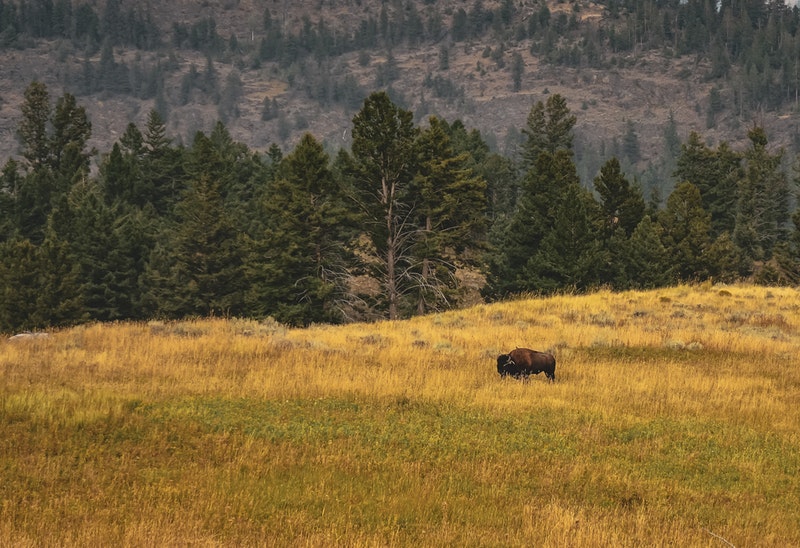Native grasses and wildflowers once blanketed much of the Great Plains. The Midwest’s fertile soils, created by glaciers and a diverse prairie ecosystem, also turned out to be ideal for agricultural use, which quickly dominated the region. But the native prairie plants of the Midwest are making a comeback. Here are seven reasons to add these hard-working locals to your landscape.
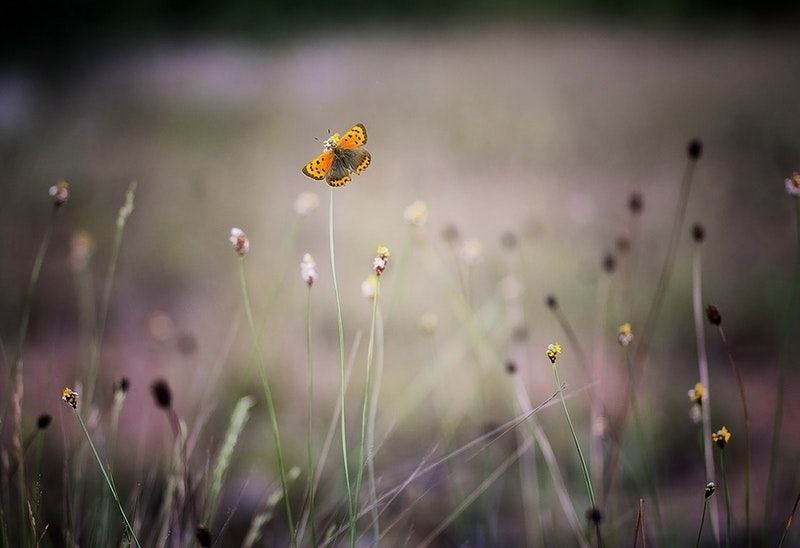
7 Reasons to Plant Midwestern Native Grasses
- Return Your Land to Its Original State: The Midwest’s grasslands were once home to bison, elk, prairie chickens, and grouse galore. Landowners interested in conservation and wildlife are increasingly interested in restoring the original prairie habitat.
- Create a Sustainable Ecosystem: Grasslands are wildly diverse places. The collection of insects and small mammals that live there sets up a food chain that supports a menagerie of wildlife. These plant and animal species rely on one another for perpetual food and shelter. It’s a self-sustaining cycle that once re-established, will flourish on its own.
- Attract Wildlife for Hunting or Watching: Because of the diversity of life drawn by native plants, prairie gardens are showplaces for wildlife of all sorts. Pollinators and other insects are attracted to the native wildflowers and grasses that house and feed mammals from tiny shrews to meadowlarks and up to the mammoth elk. If you’re looking to boost your property’s critter population, there’s no better habitat than a native prairie.
- Reduce Landscape Maintenance: If you’re looking for a lawn alternative or undemanding garden addition, native grasses are blissfully low maintenance once established. They evolved in our landscapes to thrive without human intervention and are a stress-free choice for many areas of your property.
- Address Troublesome Areas: Are you constantly faced with recurring landscape challenges? Wet spots, drought conditions, saline soils, and erosion or environmental concerns can all be overcome with native plantings selected for these conditions. Returning these nagging spots to low-maintenance vegetation may just be the ticket to cross one thing off your to-do list.
- Change Your Landscape Aesthetic: The seedheads of native grasses and colorful blooms of wildflowers can add variety and movement to your landscape design. These indigenous plants create a natural, less curated look that feels decidedly relaxed.
- Enjoy Some Cost Sharing: USDA Natural Resource Conservation Service (NRCS) Conservation Resource Program is one of a few opportunities to offset some expenses by restoring land to native prairie with native plants and wildflower seed. Enrollment periods and requirements change frequently. Contact your local NRCS or FSA office for the latest information and application details.
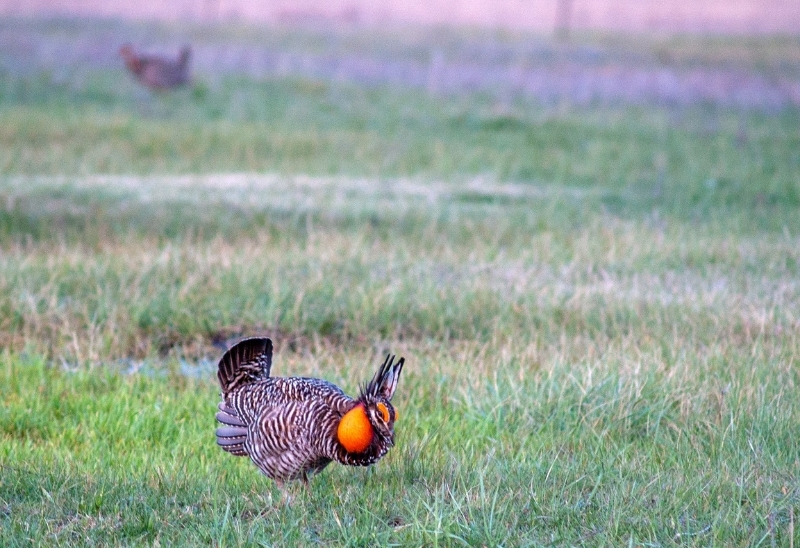
If Midwestern native grasses are starting to sound appealing, you aren’t alone. The popularity of native plants is soaring. But planting a prairie garden requires an understanding of the growing lifecycle. Here is a guide to the major considerations and techniques for planting and maintaining a prairie’s worth of Midwestern native grasses and wildflowers.
Where Should I Plant Native Grasses?
First, consider if you are planting an individual prairie garden or acres of grasslands? Both are environmentally beneficial but they have different purposes. A prairie garden is mostly for personal enjoyment and small wildlife observation. Clumps of grasses, wildflowers, and other native plants will be right at home in a prairie garden, attracting birds, butterflies, and small mammals. Keep in mind that native plantings range from 2-3 foot low-growing varieties like Itasca Little Bluestem to Tomahawk Indiangrass that grows 5-6 feet in height and width. Choose low growing varieties where they won’t obscure line of sight from windows or driveways and taller varieties for privacy screens or hedges.
If you’re looking to create large-scale wildlife habitat, the more acreage you can dedicate the better. NRCS recommends 20+ acres for large wildlife or ground bird species like prairie chickens and pheasants. Prairie restorations are usually large, open areas of large acreage, but you can extend a smaller plot by situating it near foot plots, hayfields, or open cropland. Aim for a minimum distance of 50 yards between woodlots or hedgerows to reduce predator pressure on wildlife nesting areas.
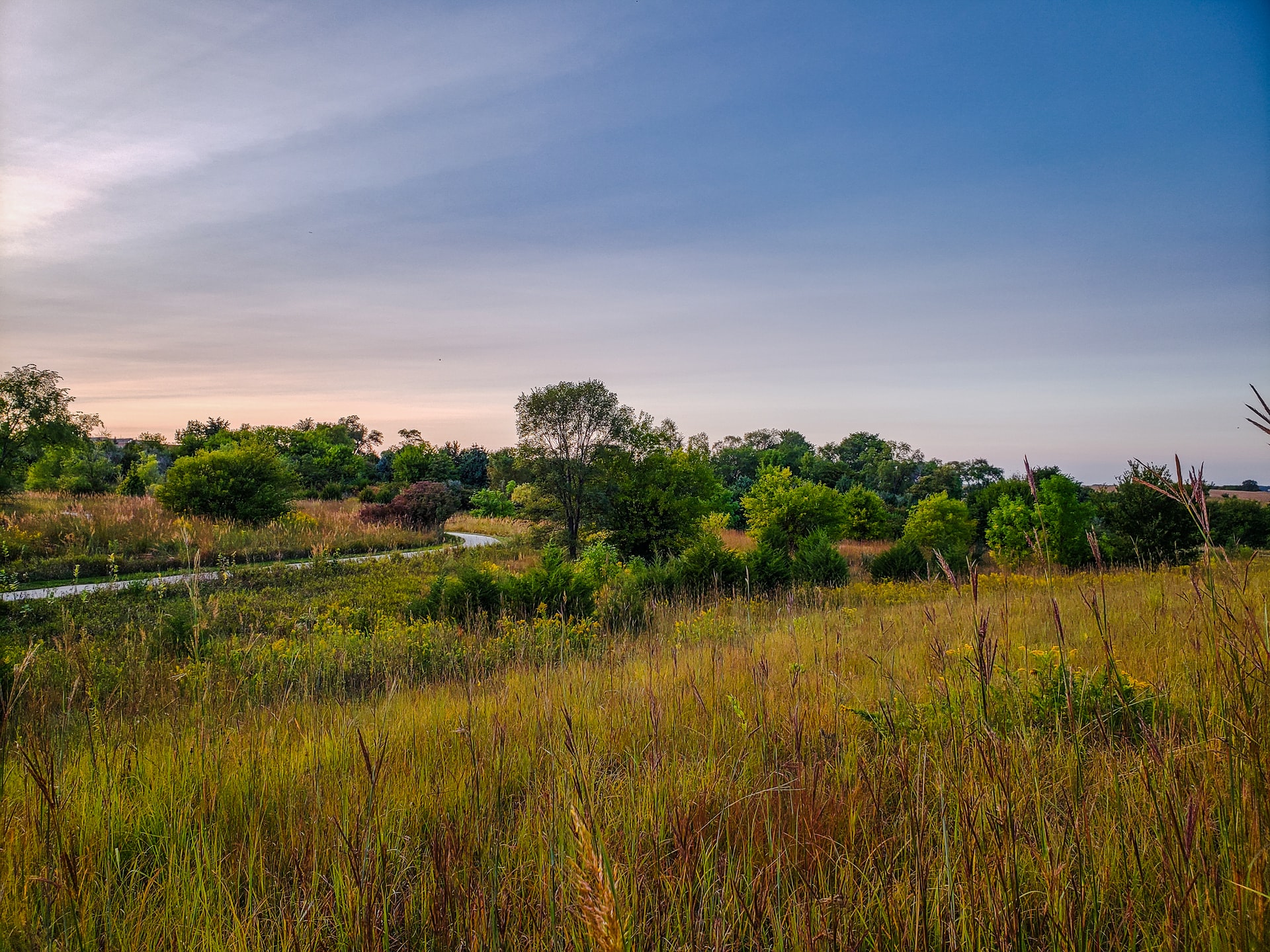
Also consider your location’s soil and sun exposure. Lowland native grass seed like Canada Wild Rye and Virginia Wild Rye tolerate wet spots and some shade. If you have dry soil and full sun, Deer Creek Seed offers upland native grasses like Little Bluestem or switchgrass that are well-suited to those locations.
Which Native Grass Should I Plant?
Decide which seasonal gaps you want to fill - warm season, cool season, or both? There are excellent choices for each season.
Warm Season Grasses
|
Grass Species |
Height |
|
3-6’ |
|
|
3-5’ |
|
|
2-3’ |
|
|
4-8’ |
|
|
2-3’ |
Cool Season Grasses
|
Grass Species |
Height |
|
2-3’ |
|
|
2-3’ |
|
|
2-3’ |
|
|
2-3’ |
Whichever grass types you choose, select a mix. The Great Plains has always been a variable terrain, so think about the diversity of height, structure and bloom time of your plantings. The key to any ecosystem is attracting a wide range of biology. The more menu options you offer, the more species you will attract. Deer Creek Seeds offers convenient blends of warm and cool season grasses plus native wildflowers for easy planting.
Evaluate whether you want to provide spring nesting sites (cool season grasses), winter wildlife cover (warm season grasses), or pollen and nectar producing plants (wildflowers), or maybe all three! And if you are willing to sacrifice the stand for a season, these grasses can also be lightly grazed by livestock.
When you buy, choose regionally adapted seed. These days almost anything can be bought online, anywhere. But if you intend to plant varieties native to the Midwest, it makes sense to purchase locally grown seed so that the grass species is not only native to your climate, but the actual seed you are planting is selected, grown, and adapted to local conditions. Deer Creek Seed’s Upland and Lowland mixes are grown nearby in South Dakota and Minnesota making them ideally suited for Upper Midwest sites.
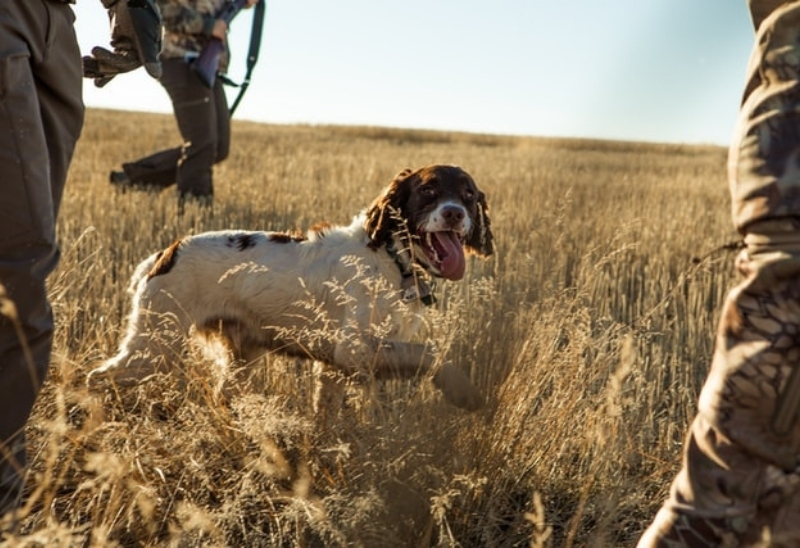
Establishing Native Grass Stands
Native grasses are perennials that establish slowly, sometimes taking up to three years to truly set up shop. So they need extra help to outcompete weeds. Starting with a clean, weed-free seedbed is your best insurance policy.
The site can be managed conventionally (by plowing and herbicide use) or no-till, depending on your interests and equipment. Either way, you want to start your prairie restoration right by eliminating existing weed or crop vegetation through herbicide, cover crop, or repeated plowing/disking. When choosing an herbicide, remember to consider any carryover that could impact newly planted seed. When possible, opt for a short-lived product like glyphosate.
Native grasses are most successful when seeded in spring from mid-April to mid-June. But cool season grasses can be seeded in August as well. Both can also be frost-seeded in areas with little fall vegetation (like harvested cropland).
Cool season grasses are typically seeded at 8-12lb/acre and usually include a blend of seed types. Deer Creek Seed’s Upland and Lowland Native Grass Seed mixes are perfectly suited for this application by including warm and cool season species.

Seeding chart by Sargent, M.S and Carter, K.S., ed. 1999. Managing Michigan Wildlife: A Landowners Guide. Michigan United Conservation Clubs, East Lansing, MI. 297pp.
Seed mixes can be drilled, broadcast, or traditionally seeded. Spread the seed and cover no more than ¼” deep. Because warm season grass seeds tend to be lighter and fluffier than cool season grasses and can clog traditional planters, consider adding a filler to better disperse the seed. If you are broadcast seeding warm season grasses, increase the seeding rate by 25% to compensate. It’s important to ensure good seed-to-soil contact for germination. Use a cultipacker, roller, or foot traffic to firmly press seed into the soil.
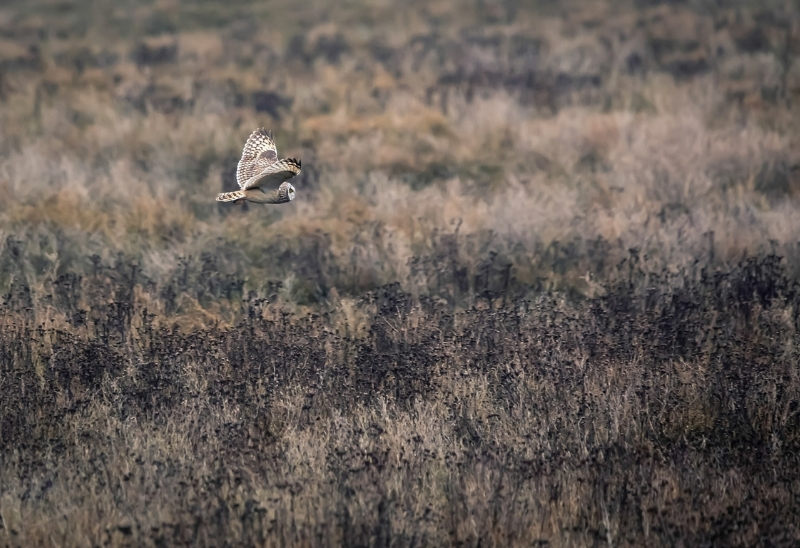
Should I Fertilize Or Spray Native Grasses?
Generally no. These plant species are well-adapted to our soils, even those with poor fertility. Nitrogen fertilizer is especially discouraged for the slow-growing warm-season grasses. You don’t want to fuel competing weeds! Only add phosphorus or potassium if recommended by your soil test results. Lime is also usually unnecessary in grasslands because the plants tolerate a wide range of pH levels. Relax and enjoy these low-maintenance plants - it’s the true beauty of planting natives!
Weed management is mainly an issue for the slow-establishing warm season grasses. But don’t give up on them because they are pokey to start. If weed populations are well managed the first 2-3 years, you’ll be rewarded with an ultra-low maintenance wildlife habitat.
For the first two years, mow annual weeds before they set seed (by August). Spot treat weed outbreaks with herbicide as needed, but remember that non-selective varieties may damage or kill your desired crop. Read labels carefully. As native plants colonize the space over time, your maintenance chores will become almost nil!
Long-Term Native Grass Maintenance
Once established, one of the best ways to reinvigorate your native plantings is with prescribed fire. Burning is a natural prairie phenomenon. Native plant species have adapted to repopulate and thrive after a fire. If possible, burn in early spring using a three-year strip rotation. Rotational burning is preferable to periodic full burns. It maintains the bulk of your habitat with minimal nesting losses.
If you participate in an NRCS Conservation program, refresh your memory each year about the requirements. Regular (and even annual) mowing of an established conservation plot is usually not allowed. If you are a conservation program participant, always consult with your local FSA office before undertaking any weed control program!
Native grasses of the Great Plains are uniquely suited to our landscapes. Adding these hardy, beneficial plants to your property provides benefits to your land, your pocket, and your local wildlife. A bit of upfront effort will provide years of conservation and wildlife sporting or observation enjoyment with little long-term output. Embrace the benefits of these local gems and go native on your land this year!
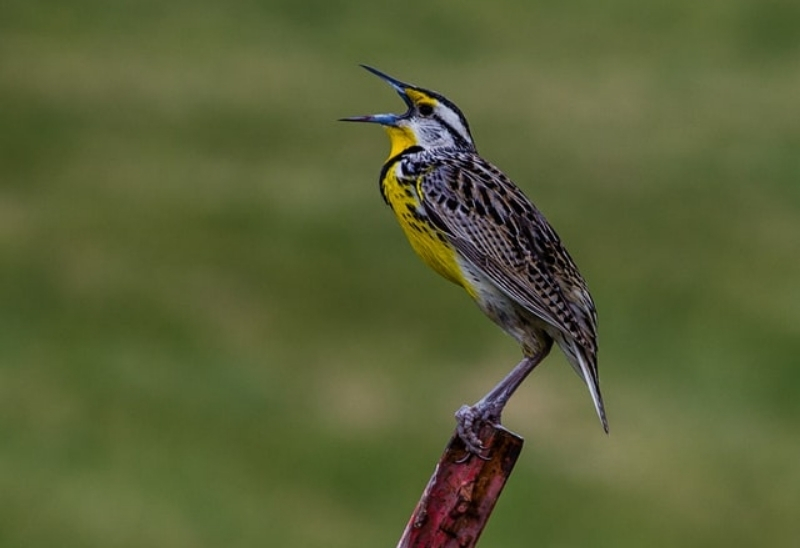
Additional Resources
- Michigan United Conservation Clubs offers an excellent, comprehensive guide to native conservation plantings, management, and wildlife.
- The Wisconsin Department of Natural Resources has a handy overview of grasslands with wonderful visual diagrams comparing native grass species.
- For the prairie gardener, The University of Wisconsin Arboretum offers an article on low-growing grasses and forbs for gardens.
- The Dyck Arboretum Of The Plains in Kansas has wonderful photography on several native grasses in this article.
- The University of Minnesota Extension has a great fact sheet on growing and maintaining prairie gardens.
USDA’s NRCS in Pennsylvania publishes a Conservation Reserve Program Job Sheet with guidelines and details for program participants.



